Generally speaking, distortion and drive pedals should be in the middle of your pedalboard or signal chain, after utility, filters, pitch shifters, wah, and compression. You can also experiment with how EQ and overdrive pedals sound before and after distortion.
If you’re working with many different pedals or even separate drive pedals, it can be hard to know what’s the best order. The preceding pedal will affect the next. If you place them in the “wrong” order you can wind up with a host of problems.
How To Properly Place Distortion In Your Signal Chain

A common way to make distinctions between different types of pedals is to put them in 5 different categories: Dynamics, Pitch, Tone, Modulation, and Time. I’ll discuss this in greater detail below.
1) Start by Putting Your Tuner, Filters, & Pitch Shifters First

The first thing you need close to the guitar is anything that’ll adjust or change the pitch or dynamics. That includes the utility, filter/wah, pitch, compressor, and EQ. Most people would put the tuner (utility) at the very start of their chain.
That way you can turn off all the sound outwards and still tune the guitar during a performance. After that, you can place your pitch effects like your Whammy Pedal in your chain (which I wrote more about here).
The effect of a wah pedal is best when it’s affecting the clean signal from the guitar. Placing it later on in the chain signal will result in you also using the FX on the modular and time-based effects.
2) Your Dynamics Should Come Next

The distortion, gain, or overdrive should be after utility, pitch, and dynamics (volume and wah) to the dynamics. It’s early in the chain signal because it’s part of the foundational sound you’re trying to shape.
Generally, you want to distort only the clean tone. But, later on, we’ll discuss an alternative way to this, too.
Does the order of distortion pedals matter if you’re using more than one? Yes and no. It matters if you’re stacking the sound.
The difference between distortion and overdrive also matters in those cases, but we won’t go into that here (I talked about this more in my other article). If you’re using the distortion pedals separately the order among them doesn’t matter.
3) Put Your EQs After Your Distortion Pedal
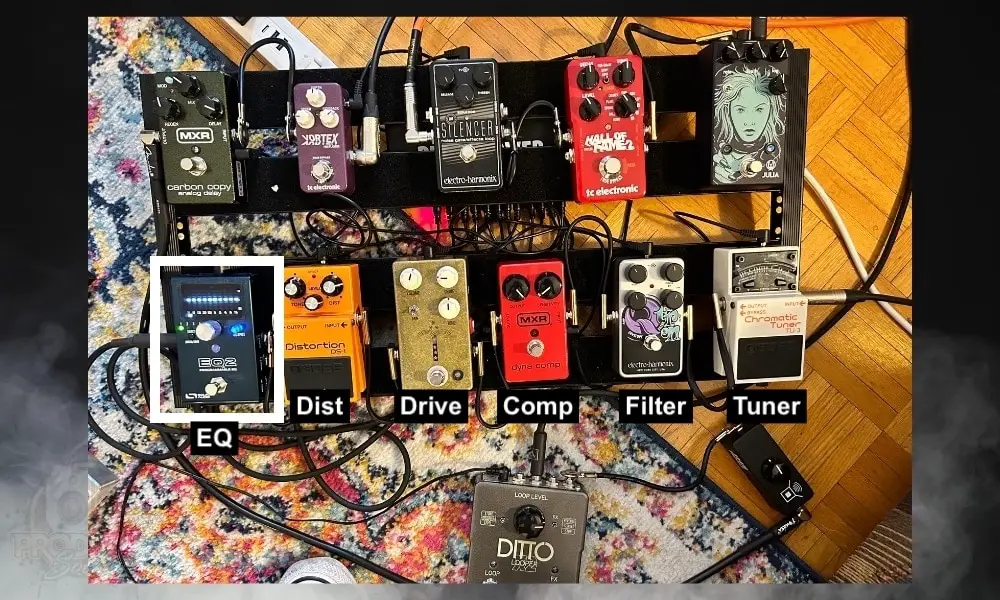
Distortion is a key element to shape the tone of your guitar. Next to distortion, you want the EQ or other tonal effects pedals. Again, exactly how you set it up within each category of effects is less important.
4) Connect the Modulation Effect Pedals After
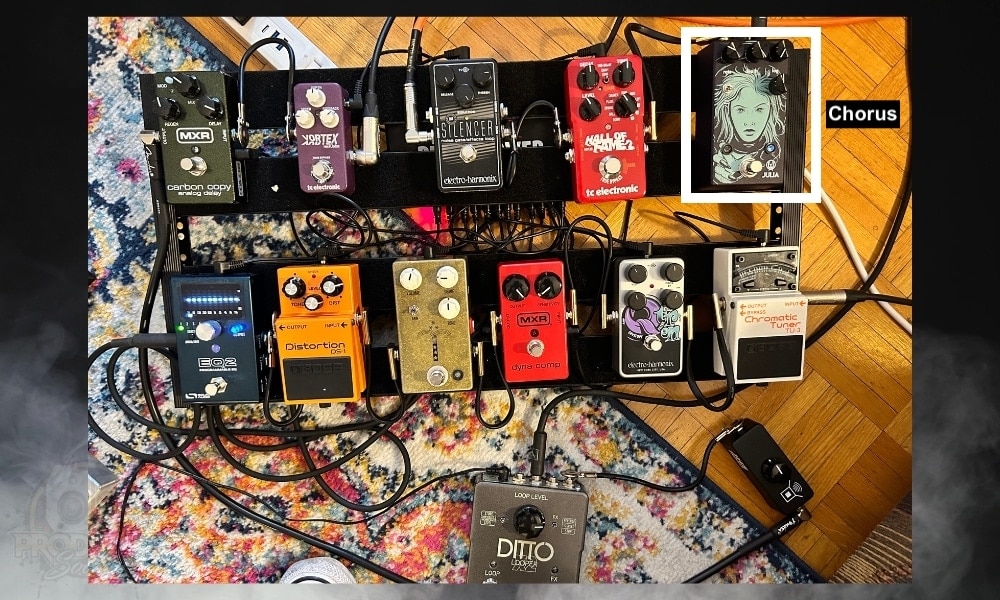
Effects like tremolo, flanger, phaser, etc, are part of the modulation. These are the sound that gives you much more characteristics.
You’re now working on shaping the details of the sound. Before adding these pedals, make sure you’re happy with the sound you have so far.
5) Add the Time-Based Effects Last

The very last effects you want in your chain signal are the ones that deal with time, such as delay or reverb.
It’s possible to add them earlier, but generally speaking, having them last gives you the most control over the sound and is less likely to get muddy-sounding.
6) Experiment With Your Signal Chain After The Fact

All of these steps are suggestions and guidelines – not hard-and-fast rules. This is actually an important point to make for any musician.
Signature styles and sounds often come from breaking the norms and thinking outside the box. However, in order to come up with new and creative ways of doing things, you’ll probably have to start with what everyone else is doing first.
This system of pedal placement is true and tested – and it works. You should experiment by trying different chain signals. In the next section, I’ll discuss this standard system in greater detail.
This will help you understand the reason for some guidelines and why some of them may not even apply to you.
Why The Middle of the Signal Chain Is The Best for Drive/Distortion
The thinking behind this is that you first want to shape the sound with “broad strokes”, as Guitar World puts it. If you’re a sculptor you want to get the base shapes down first before you start chiseling the details.
1) It’s Best to Shape the Foundation of the Sound First
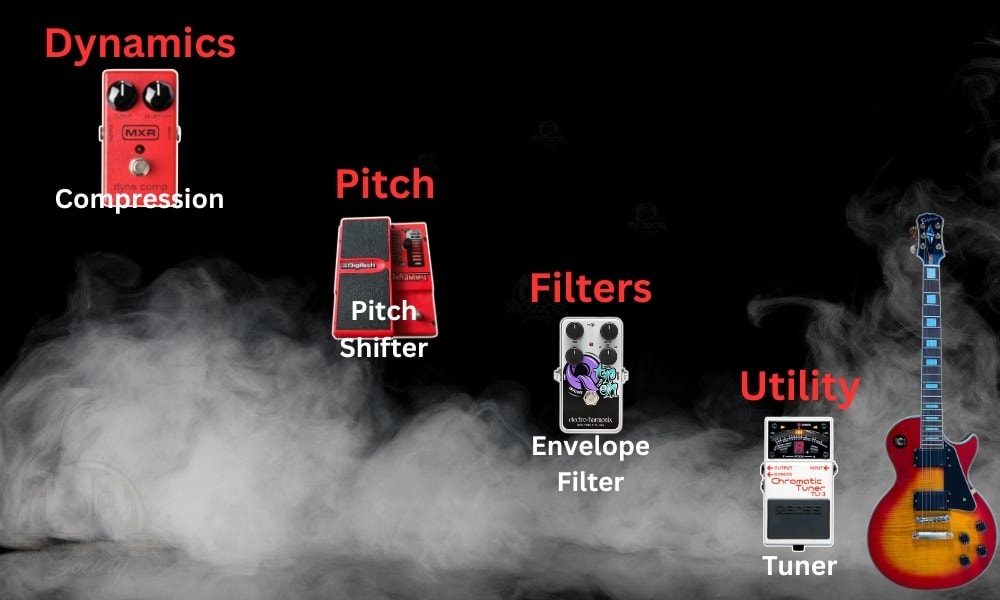
We have divided the pedal board into 5 categories: Pitch, Dynamics, Tone, Modulation, and Time.
At the front, close to the guitar signal, you place the pedals that will have the most dramatic effect on your sound. In other words, these are dynamic-dependent effects.
Just think of the difference between a clean jazz sound and a brutal metal sound. The foundations of those sounds are created in the first parts of the pedal board.
Distortion is a part of the board-stroke sound shaping. Based on my research and testing, having distortion pedals early in the signal chain allows you to create a tone that’s less obfuscated by other effects pedals.
For example, most people would put a distortion and drive on the signal first, and then put the EQ after.
Because think about it, you’re going to distort the signal anyway so there’s no sense in perfecting the frequencies before you do that.
The reason for this is that distortion pedals clip the signal as I said at the start of the article. That said, this is just my view based on the things I know.
2) And Add Distortion, Modulation & Time-Based FX Next
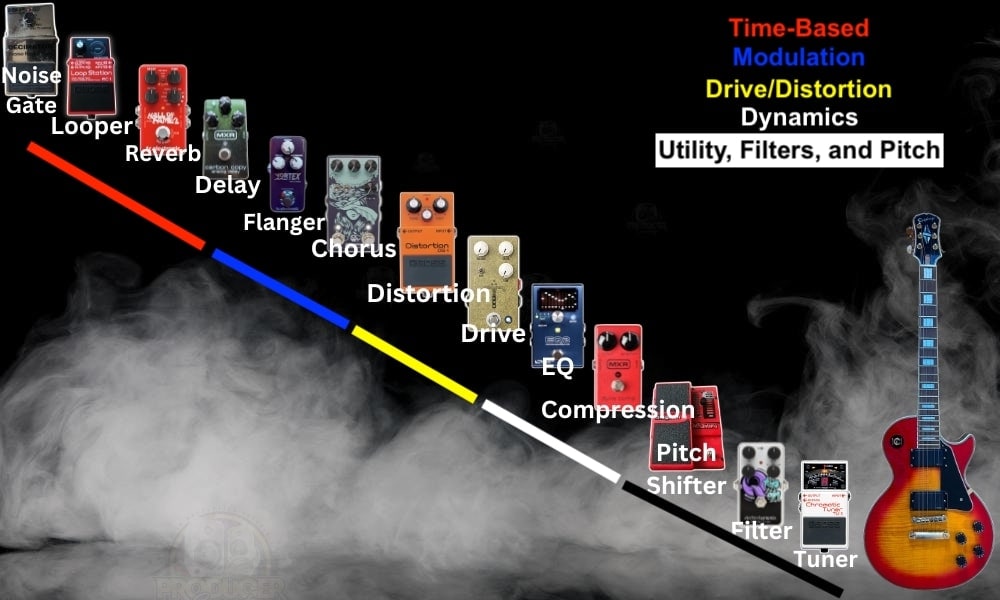
Next up we have modulation and time categories. Take something like my TCE Vortex Mini Flanger (on my Product Page).
Ideally, you add it to an existing tone to enhance it or give it a different flavour. The idea is not to create something completely new with modulation effects.
We’re in the “narrow stroke” part now. If you add modulation before distortion, you’ll end up distorting the effect which sits on top of the clean signal, rather than the clean signal itself. This runs the risk of making it sound muddy again.
By keeping distortion before any modulation pedals you can actually control them both individually without affecting one another. This is why the signal chain matters on your guitar pedal.
Listen to Brian May’s guitar work. His sound is often effects-heavy from a modulation standpoint. But underneath it, all is a very particular guitar tone. The typical Queen effects are a layer on top of Brian May’s foundational guitar tone.
4 Other Places For Distortion Pedal Placement
1) Use A Distortion Pedal With An Impulse Response
Ola Englund sometimes runs his distortion pedal via an impulse response in his DAW. I can’t say for certain how much he uses it, but his video shows that you can actually get some great tones out of it.
This means he bypasses all clean signals from the amp, and his guitar goes straight to the distortion pedal. There are pros and cons to this. The good thing is that you get the purest pedal sound you could hope for since there is no “distraction” from the pre-amp.
The problem can be, if the amp has a good clean sound, you can’t access it. This is the ultimate “computer metal” type set-up, but there’s nothing wrong with it if it saves you serious money, time, space, and noise.
2) Use the Distortion Pedal As the Pre-Amp
Another, perhaps even easier, way to do this is by letting the distortion pedal act as your pre-amp through the FX Loop via the FX Return. The guy from the CSGuitars does a great job of explaining how something like this would work.
3) Try Delay Before Distortion
This has been done by several famous guitar heroes, such as Eddie Van Halen and Jimmy Page. The delay pedal before distortion makes the delay much more present.
It almost becomes more of a repetition than an echo. You can create really cool and wild call-and-response effects this way.
4) Or Distortion after Reverb
This unconventional setup can create a really gritty and dirty-sounding guitar tone. This is much more up-front and in your face. The reverb effect gives the sound more space, and you now distort that space – which is pretty cool.
When you are experimenting and going the unconventional route, tweak with caution and look for a balance.
Ultimately, chain signal and pedal order come down to artistic expression and creating whatever sound you want to create. But you’ve probably heard that before.
Other Articles You May Be Interested In
- How to Use The JHS Morning Glory V4 + (7 Quick Tips)
- How to Use The Ibanez TS9 Tube Screamer + (5 Cool Settings)
- What’s the Difference Between Gain and Drive? [ANSWERED]

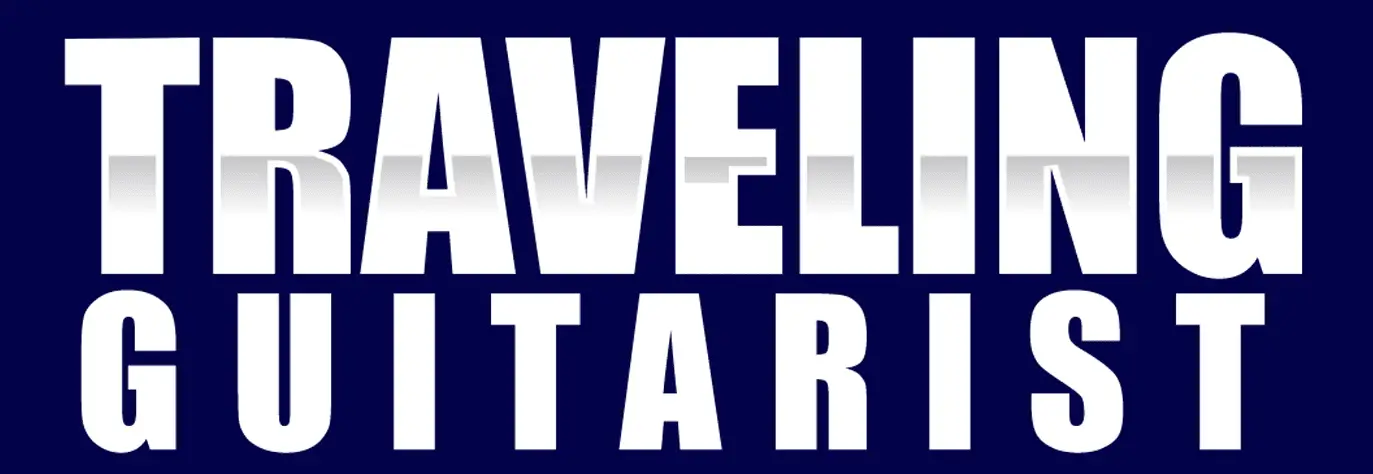
 Written By :
Written By :
